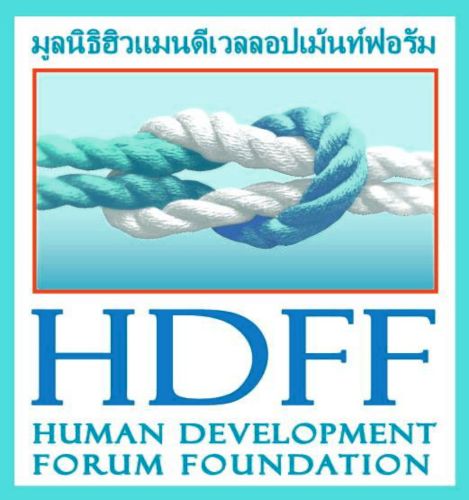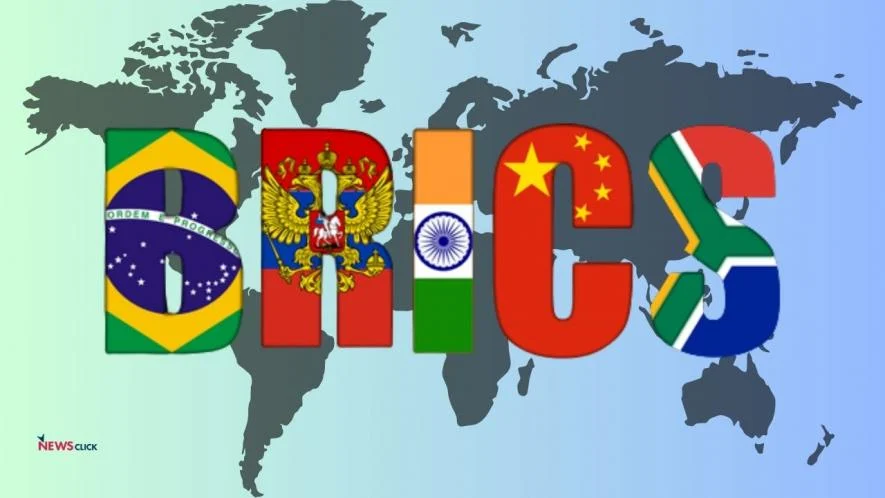Jessica Irene Wong Wibowo
Introduction
BRICS, an acronym for Brazil, Russia, India, China, and South Africa, represents a group of emerging economies that want to enhance economic cooperation among its members to strengthen their economic and political standing in the global stage (Chen, 2023). The term, BRIC, was first coined in 2001 by Goldman Sachs chief economist, Jim O’Neill, who observed the potential of Brazil, Russia, India, and China to dominate the world’s economy by 2050, which then joined by South Africa in 2010 turning the term into BRICS (Acharya, 2023). BRICS started their official annual meetings in 2009 to discuss their partnership, which in 2023, resulted in the expansion of six new member countries – Egypt, Ethiopia, Saudi Arabia, United Arab Emirates (UAE), Iran, Argentina – turning the group into BRICS+.
As a group, BRICS is seen as an alternative to global bodies dominated by Western powers, and provides some benefits to its members, such as development finance and increased trade and investment to its members (Acharya, 2023). Although BRICS received some criticism for producing minimum value so far, the bloc represents 42% of global population and 32.1% of world’s gross domestic product (GDP), surpassing the share of G7 countries’ GDP (Shea, 2023; Richter, 2023). The bloc’s expansion into BRICS+ elevates their influence even more, signifying that BRICS+ represents 47% of world’s population and 36% of global GDP (Ntengento, 2023).
BRICS Pillar of Cooperation
BRICS member countries focus their partnership on three pillars: political and security cooperation, financial and economic cooperation, and cultural and people-to-people cooperation. In terms of political and security cooperation, BRICS members are leading members of various organisations, such as G20 and Asia Pacific Economic Cooperation (APEC). BRICS members will meet several times a year for the BRICS summit, on the sidelines of G20 summit and UN General Assembly summit, as well as to coordinate their approach to peace and security matters (BRICS, 2023). Furthermore, BRICS members engage in dialogue and the sharing of best practices on various security matters, including counterterrorism, cybersecurity, transnational organised crime, anti-drug initiatives, and anti-corruption cooperation (BRICS, 2023).
The financial and economic sector is another key focus for BRICS, given their significant economic growth in recent years. BRICS has established a Strategy for BRICS Economic Partnership to enhance intra-BRICS economic cooperation by creating opportunities for market access, facilitating market inter-linkages, promoting mutual trade and investment, creating a business-friendly environment and diversifying trade and investment (BRICS, 2023). They also have a BRICS Business Council and a BRICS Women’s Business Alliance to provide entrepreneurial networks for wider socio-economic growth. To further support one another, BRICS members also have a commitment to strengthen collaboration in vital sectors, e.g., energy; information and communication technology; science, technology, and innovation; agriculture; and green economy. Furthermore, BRICS established the New Development Bank (NDB) in 2015 to provide financial support for emerging markets and developing countries for funding infrastructure and climate-related projects (Pandey, 2023). The group also created a USD 100 billion Contingency Reserve Arrangement, a foreign currency liquidity facility that the members can tap into during global financial turmoil (Pandey, 2023).
The third pillar of cooperation within BRICS centres on cultural and people-to-people collaboration. The partnership focused on contributing BRICS scientific and technological strengths for the global good. It is done through numerous partnerships, such as the Agreement on the Cooperation on BRICS, the BRICS Remote Sensing Satellite Constellation, accelerating industrialisation through the Fourth Industrial Revolution, and the BRICS Energy Research Cooperation Platform. BRICS also has a cooperation in the education sector to enable information sharing among member states regarding their education systems, by establishing Networks of BRICS Universities, a BRICS Academic Forum, a BRICS Think Tank Council, and many others. Finally, BRICS members also have their cultural exchange forum, through the BRICS Film Festival, BRICS cultural events, and the BRICS game (BRICS, 2023).
BRICS+ Analysis
BRICS+ and Minerals
BRICS expansion is very mineral and energy centric (Ismail, 2023; Baskaran and Cahill, 2023; Wood, 2023). The BRICS+ members will consist of three of the world’s largest oil exporters, which are Saudi Arabia, UAE, and Iran, as well as two of the largest oil importers, which are China and India. BRICS+ will also have 72% of rare earth minerals, with 75% of world’s manganese, 50% of world’s graphite, 28% of world’s nickel, and 10% of world’s copper, excluding Iran’s copper reserves (Baskaran and Cahill, 2023). The bloc will also have control of the lithium supply, since the addition of Argentina will make BRICS+ have three of the five largest lithium producers in the world, along with China and Brazil. Another important point is also the addition of Iran, who has the largest zinc deposit and the second-largest copper deposit (Baskaran and Cahill, 2023). As the world is shifting to renewable energy, these minerals will be of significant importance, e.g., lithium for rechargeable batteries and electrical vehicles; and zinc for rust-proof solar and wind-power components. A sanction for this bloc may significantly affect national and energy security (Wood, 2023).
BRICS+ and De-dollarisation
The US dollar has dominated the currency in the world since World War 2. However, the US has been using the US dollar to impose restrictions and sanctions, as well as increasing interest rates, which cause many developing countries to suffer in paying higher interests on their dollar debt and battling the exchange rate impact from a strong dollar (Yu, in Ismail, 2023; Global TImes, 2023). To end the western dominance, BRICS countries have been talking about the possibility of creating a BRICS currency, as an alternative to the US dollar, although there is no concrete plan on doing that at the moment (Savage, 2023). Instead, BRICS will push for the use of local currencies, e.g. trade between Russia and China where 80% of the time use either Russian Rubles or Chinese Yuan and the trade agreement between UAE and India to use Indian Rupees (Ismail, 2023). Furthermore, the inclusion of oil rich countries in BRICS+ – Saudi Arabia, UAE, Iran – can also threaten the position of petrodollars, which relates directly to the US Dollar. For instance, Saudi Arabia considers accepting Chinese Yuan for their oil trade (Said and Kalin, 2022).
BRICS+ and Belt and Road Initiative (BRI)
The Belt and Road Initiative (BRI) is China’s ambitious development and investment initiative to broaden China’s economic and political influence, which encompasses Europe, Africa, Oceania, and Latin America (McBride et al., 2023). Although there is no formal agreement between BRICS and BRI, both share the same goal, to reshape the geopolitical and economic order, and foster cooperation between mostly non-Western emerging countries (Singh, 2022). The similarities between them can be used for mutual cooperation, where the BRI can provide a broader platform for BRICS members to build stronger connections to their regional neighbours (Bokova, 2022). BRICS can be seen as nodal countries to take a lead in connecting and driving economic development of other countries along the BRI, and deepening the influence of China across the region (Singh, 2022). Furthermore, as China expresses its intention to cooperate with other multilateral development institution, e.g., the BRICS NDB, to support BRI and developing guidelines for its development projects. At the same time, it is also important to note that the alignment of BRICS and BRI may not happen anytime soon, because of the issues within BRICS, e.g. disparity in economic power and lack of mutual trust, to name a few (Singh, 2022).
BRICS+ Challenges
The expansion of BRICS promises huge potential in ending the western, specifically the US, dominance in world’s order. However, there are some challenges faced by the BRICS+ to achieve its aim, as listed by Forthomme (2023), a senior editor in the Politics, Foreign Affairs and Society sector. First of all, BRICS+ lacks the basic infrastructure, e.g., a secretariat, to serve as an independent technical support to provide fact-based evidence needed to make informed decisions. Currently, BRICS summit and the technical support is organised by the host country which causes a lack of continuity between the summits. The next challenge of BRICS+ is the ever-going rivalry and tension between its members. China-India disputes regarding their border are still ongoing and are not likely to end anytime soon. At the same time, the expansion of BRICS brings together Iran, Saudi Arabia, and UAE, where the relation between Iran and Saudi Arabia, including its ally UAE, is still tense due to the continuing arguments regarding Islam – between Sunnis and Shia. Another tension is between Egypt and Ethiopia over the latter’s project, Grand Ethiopian Renaissance Dam (GERD), with Egypt believing that it will threaten its water share of the Nile (Asmar, 2023).
Another important challenge of BRICS+ is the persisting economic links to the West and economic crises, e.g., pandemic, will only raise dependence since IMF and the West still act as the main lenders, especially to countries like Egypt, Ethiopia, and Argentina. In relation to that, BRICS institutions still cannot replace Western institutions. For instance, the BRICS NDB (New Development Bank) is far from being World Bank’s rival. Finally, it is also crucial to note that Russia, one of BRICS key members, is engaged in a war with Ukraine, which is viewed as illegal under international law and by the majority of UN member countries. It causes many countries to sanction Russia, and causes some challenge between morality, commercial interests, and remnants of dependence on the West for the other BRICS members. Shea (2023) also points out another key challenge of BRICS, its agenda with a set of measurable goals and action plan. Currently, BRICS presents themselves as an alternative to the West, which will not be enough in the long run. The unclear agenda causes conflicting priorities between the members, e.g., Russia who states BRICS as a competitor to G7 or G20 and Brazil who stresses that they do not want BRICS to be a rival of G7 or G20. Each member also dedicates more time promoting regional economic cooperation than developing BRICS. The inequality in development and economies within the BRICS members is also a major challenge regarding its security and political stability (Sadek, 2022).
Conclusion
The expansion of BRICS members, after more than a decade, brings together numerous potentials and challenges to the bloc. The significant control over oil and rare earth minerals held by BRICS+ members will grant greater power to the bloc and drive momentum for the de-dollarisation movement. Simultaneously, BRICS+ still encounters various challenges in competing with Western hegemony, including rivalries and tensions among its members. While the journey may be lengthy, the BRICS+ movement is undoubtedly something worth monitoring on this ever-changing global stage.
Author: Jessica Irene Wong Wibowo, Lund University student and research fellow in HDFF


Comments are closed